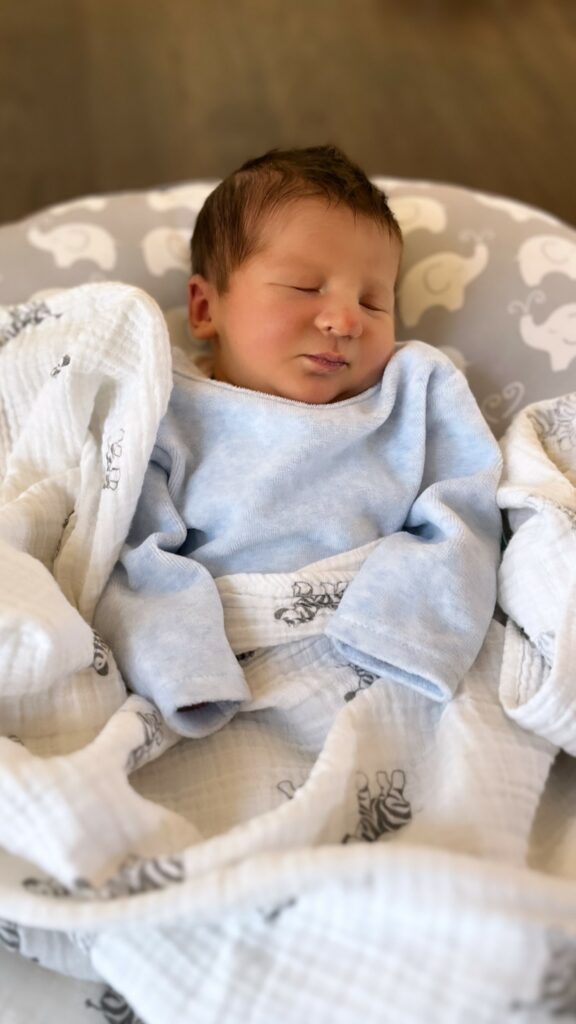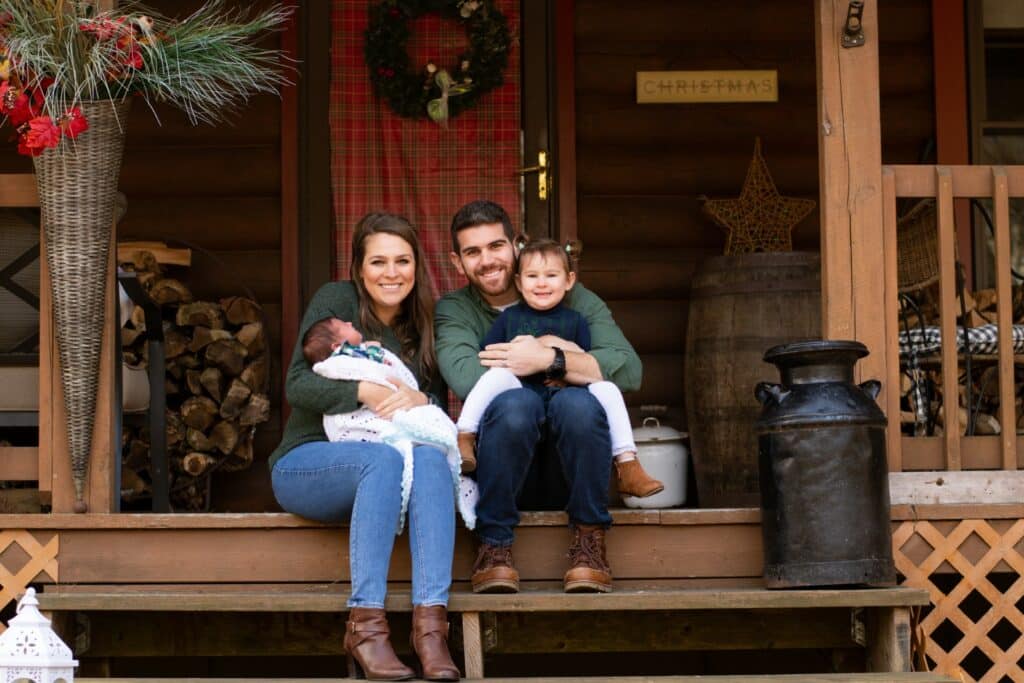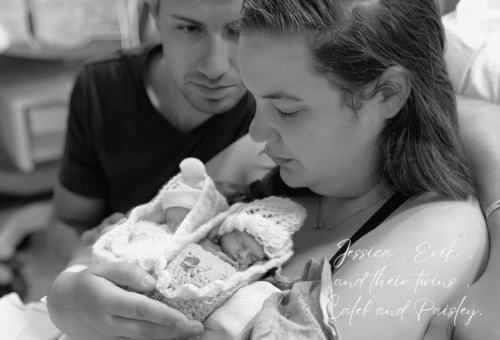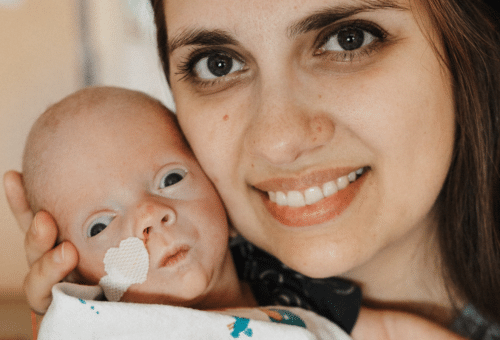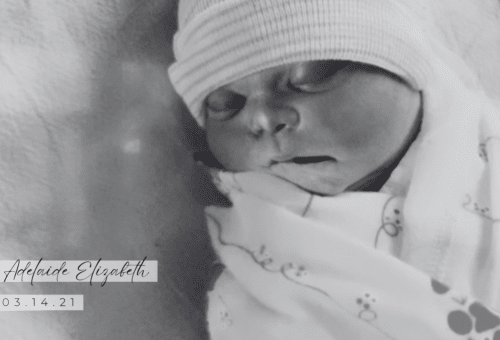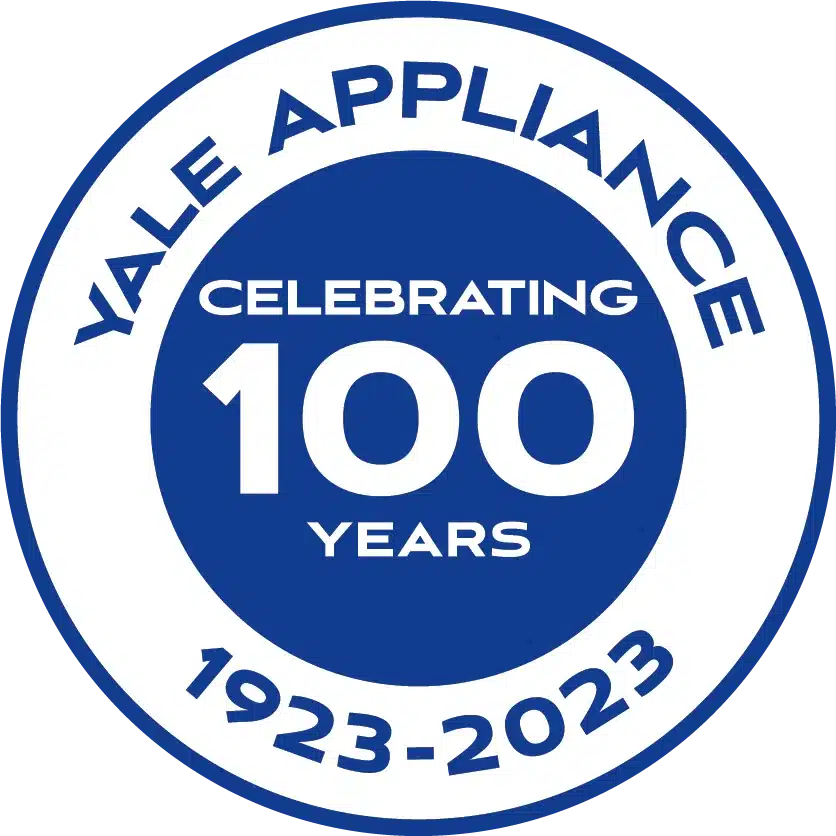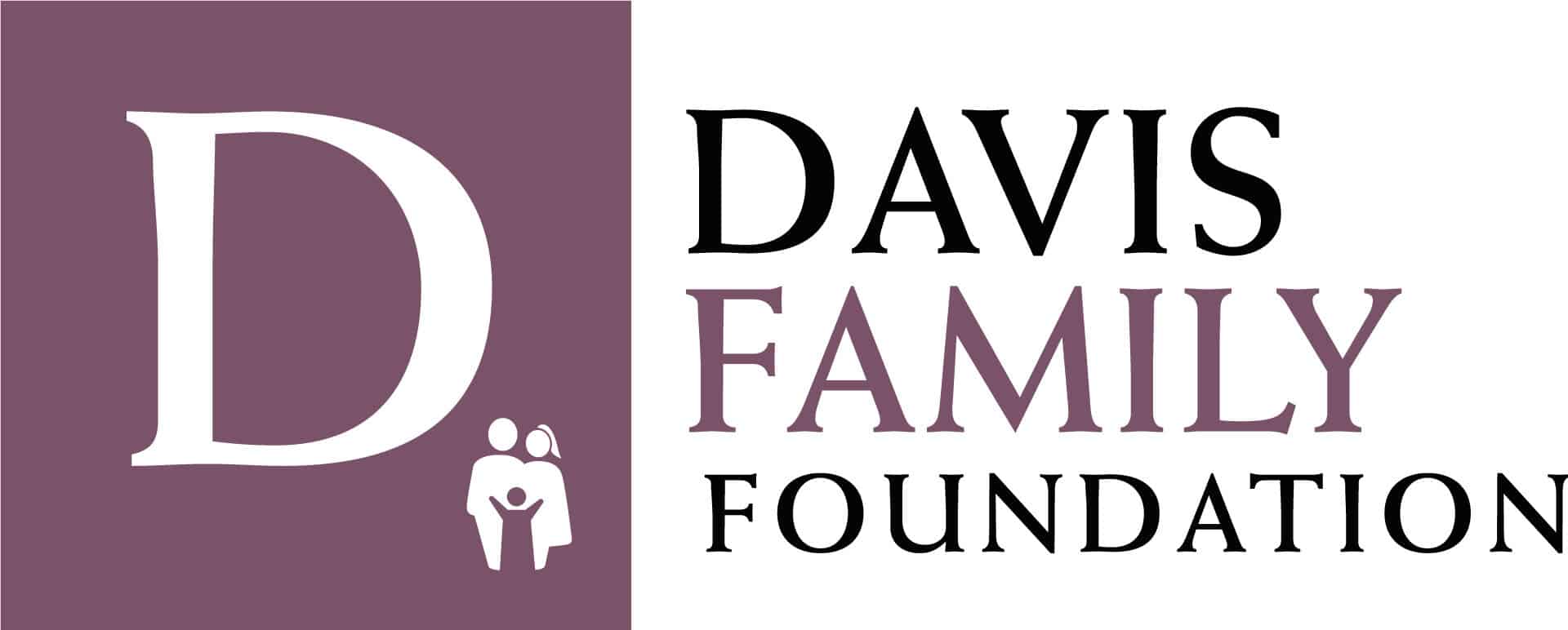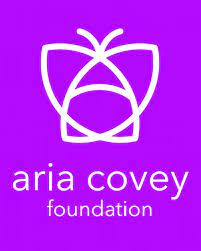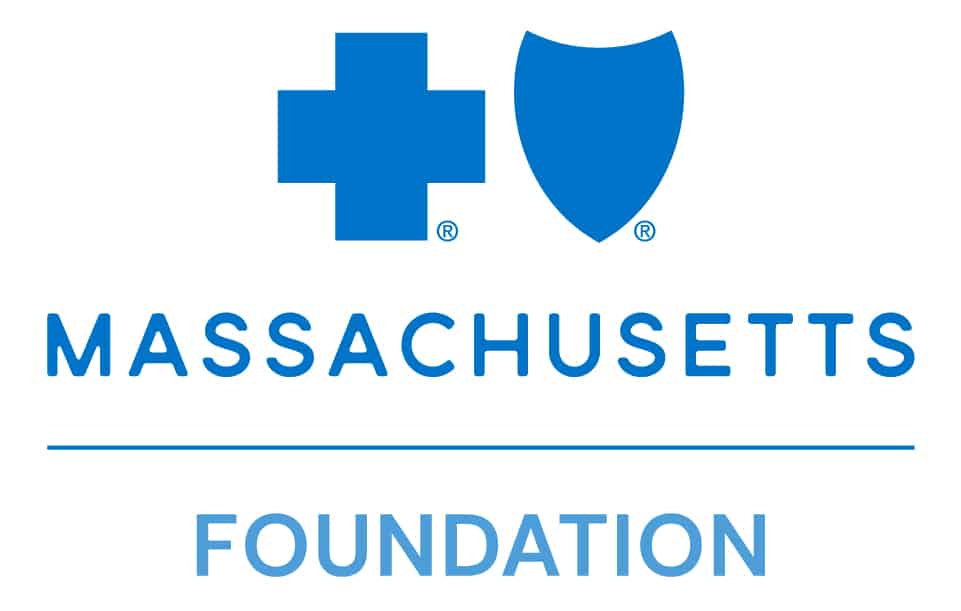
Wow! This is what a full-size baby looks like . . .
Katharina’s daughter Lorelei was born 3 weeks early, weighing 5 lbs. 3 oz. So, when second baby Maximillian emerged into the world full term and weighing 8 lbs. 3oz, her first thought was, “Wow! This is what a full-size baby looks like.” And life with two children began . . .
Katharina and her husband Michael moved to Rhode Island after Michael finished his tenure with the Navy. He was moving on to a new opportunity. Pregnant with baby number two, she quickly began experiencing the familiar pang of morning sickness. Although for her, it was more like “all day sickness, for 4 months.” Once the nausea leveled off, doctors identified that Katharina had gestational diabetes. This particular challenge? Not at all familiar.
Because gestational diabetes can cause babies to be large for their gestational age and her baby was tracking on the big side, doctors decided to induce her at 39 weeks. This was also the week of Thanksgiving. After a long labor (although just a few pushes – hooray for second children) their son was born. They chose not to know his gender in advance, so greeting him was filled with extra surprise and joy. Welcome baby boy Max.
From hospital to home and back again – this time, to the NICU . . .
Breastfeeding had been smooth and easy with baby Lorelei, who Katharina nursed for two years, so she expected a straightforward experience this time around as well. Michael and Katharina brought baby Max home the day before Thanksgiving, welcomed by out-of-town family who had come for the joint celebration of a new baby and the family holiday.
Then on Thanksgiving Day, the hospital called and said they were concerned that Max’s Bilirubin results looked too high (an indication of jaundice), and they needed him back in for further bloodwork. After two more sets of tests, they determined that Max needed to return to the hospital, this time to the NICU for a stretch in an incubator under bilirubin lights. He also needed to receive IVIG intravenously, a product made of human antibodies, to treat his jaundice.
While grateful that their son was getting the care he needed, Katharina was overwhelmed by his return to the hospital and the need for NICU care. This is scary for any parent. The doctors told her that Max needed consistent light therapy and therefore she couldn’t take him out of the incubator to feed him.
As a mom deeply committed to breastfeeding, she felt devastated. Shortly after her daughter was born, she needed formula supplementation to address low blood sugar and Katharina had been devastated then. That same feeling of deep disappointment descended on Katharina, she wanted her babies exclusively breastfed, it mattered to her.
The gift of donor milk? Especially welcome in the NICU . . .
Then doctors offered to use donor milk instead of formula while Max was in the incubator since she wasn’t yet producing enough milk to pump for him. “It might seem like a small thing, maybe not as dramatic as some family stories, but the option of donor milk instead of formula meant the world to me. My baby would exclusively breastfeed, just with a little more help.”
Not to be outdone by brother Max now in the NICU, 2-year-old Lorelei was spending that night at home with her grandmother when she suddenly woke with an extremely high fever and experienced a febrile seizure. So, the next call to Katharina and Michael was from grandma exclaiming that medics were taking Lorelei to the hospital and refused to take her to Women and Infants where Max was, so now they would have their two children in two different hospitals. It was a long, exhausting, and scary 24 hours. Fortunately, everyone returned home healthy and well.
Fast forward to today and Max is thriving, he has “chunked up well,” as mom puts it and is meeting all his milestones like rolling over and holding his head up. Sister Lorelei prompted Max’s first smile and today he finds everything she does hysterical. And she completely adores her little brother.
Better together – milk donation and building villages . . .
Katharina reached out to our milk bank just a few weeks postpartum, excited to share her milk with others. The ability to donate her milk makes her feel special but more than that, it helps her feel like part of a community dedicated to caring for all babies who need support.
“We need a community to raise our kids. It’s something we need to do together. And maybe that message is getting lost today. Being a milk donor helped me concretely feel that communal element of ensuring that babies get what they need and to feel the bond that connects mothers to each other. I am grateful to have milk to give and love the act of donation. I’m part of the village.”
Katharina packed up her fourth box of milk to send to us earlier this week. And she hopes she will be able to share much more. When I thanked her again for everything, including sharing her story, she told me that she appreciates the stories because, “It helps me picture the babies that need help and I think, perhaps it was my milk that helped them. And the stories about milk donors make me wonder if it might have been that specific generous mom who helped me and my baby Max over that tough hurdle.”
The stories are part of that community making, creating the connections that we need to collectively do our best to raise healthy babies into healthy kids and beyond.
We love hearing from our incredible milk donors and recipients. Interested in sharing your story or want us to cover a certain topic? Message us via social media (including Facebook and Instagram) or email us: news@milkbankne.org. Finally, photos are the way to our hearts so keep ’em coming!

